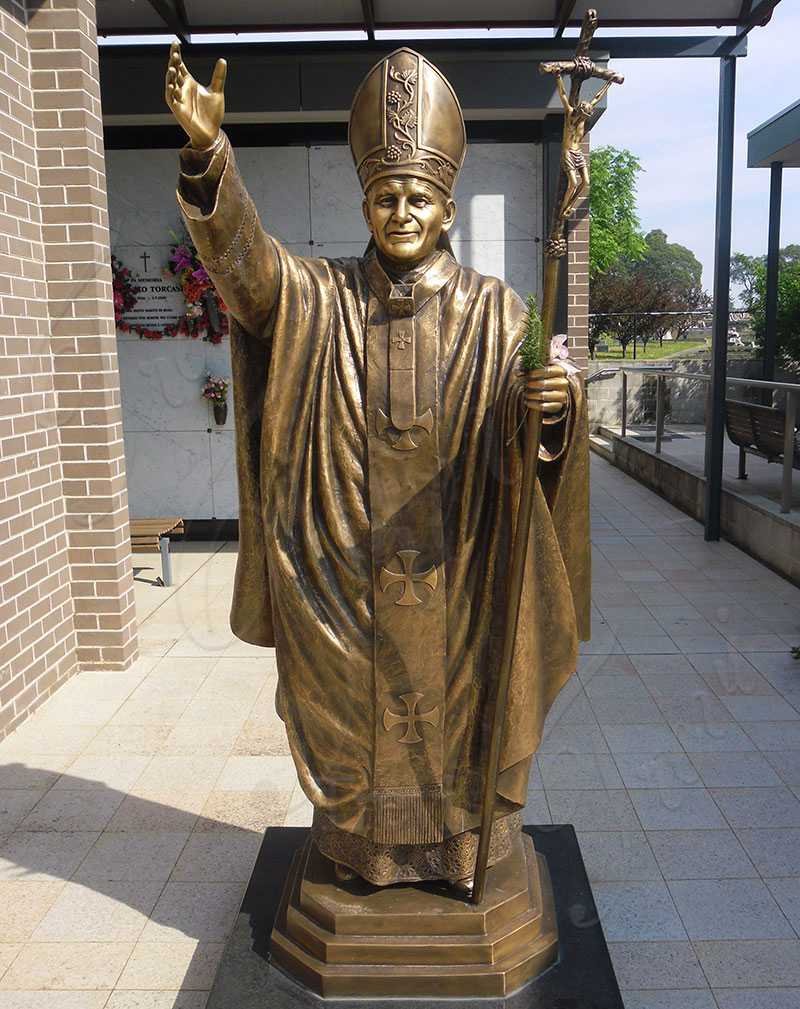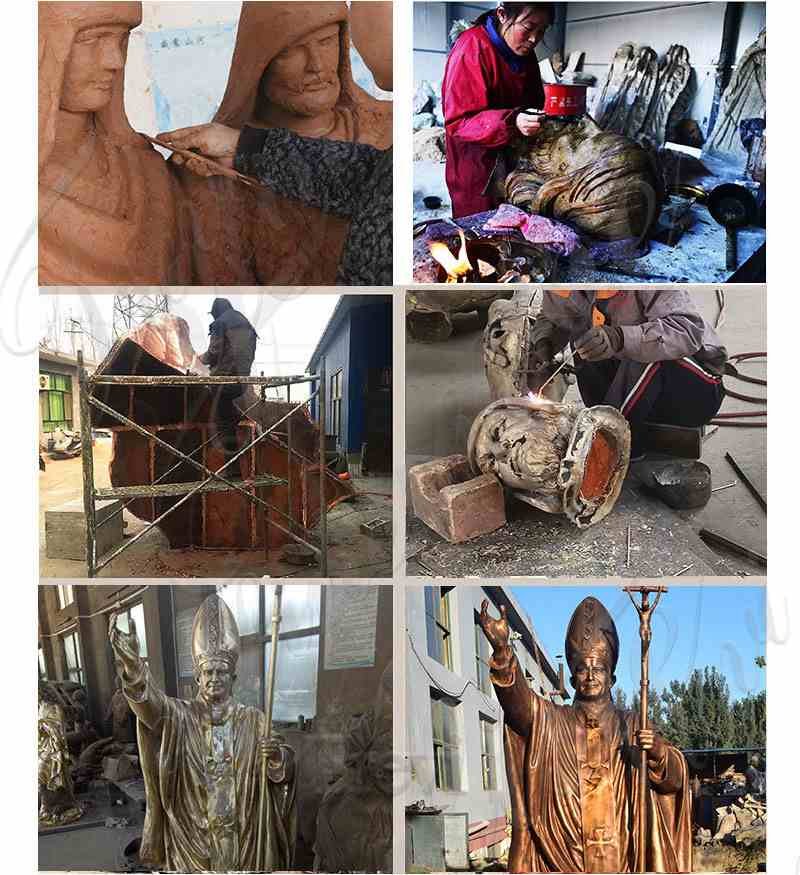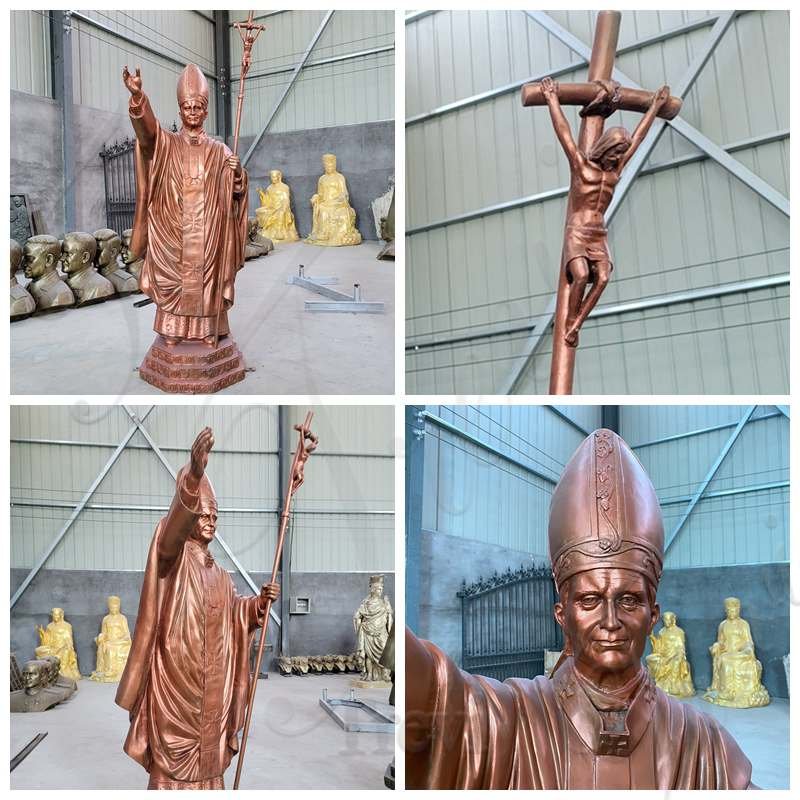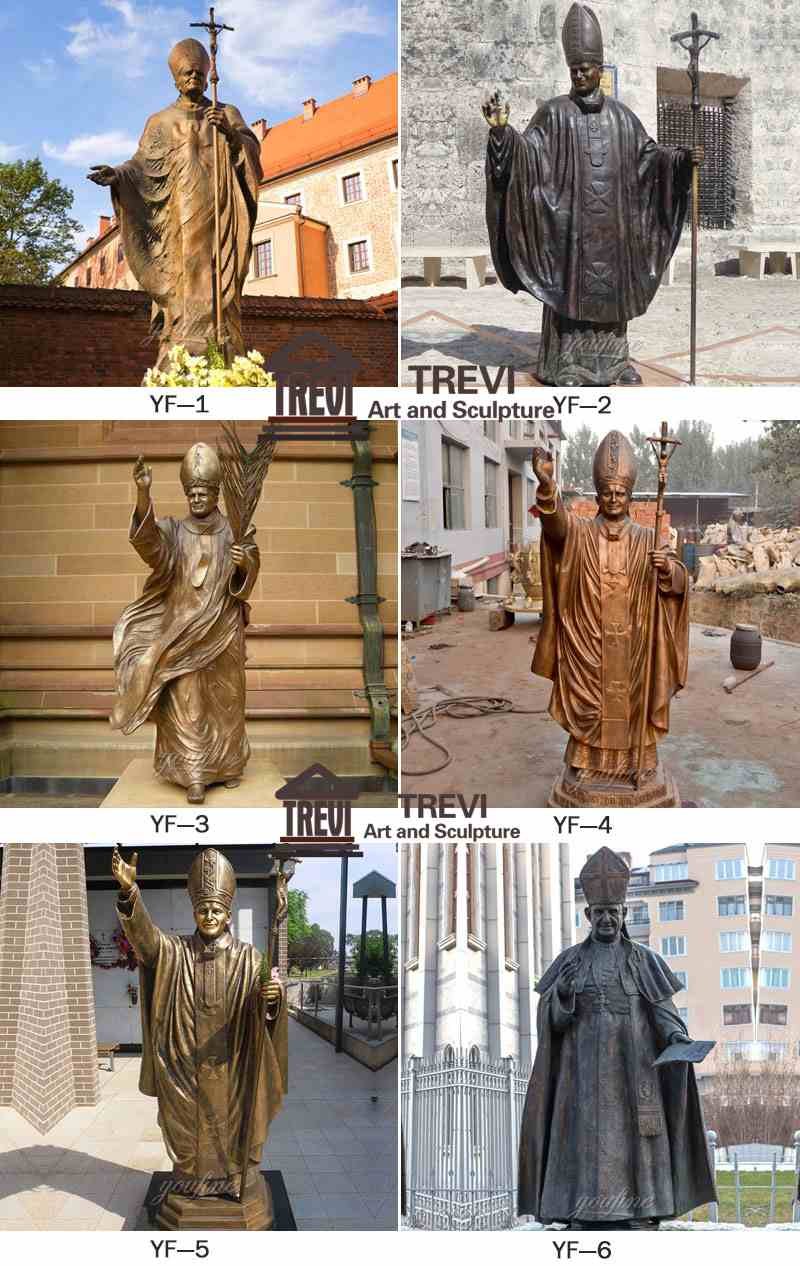Bronze John Paul II Bronze sculpture Church Decoration for Sale BOKK-619

John Paul II Bronze sculpture:
This is our latest bronze religious sculpture. Pope John Paul II was Sovereign of Vatican City from 1978 to 2005. He is known to some Catholics as St John Paul the Great. The sculpture is not only ornamental but also has a commemorative value. Customers who work with Trevi say that our religious products are of the most meticulous craftsmanship.
The sculpting process:
Our bronze Pope John Paul II statue is made of traditional ‘lost wax process. Not all the latest techniques are better than before. The lost wax method is better at retaining the original hair and detail of the sculpture. The sculpture made in this way is very realistic. Our sculptures are made in a total of 33 steps, each of which is controlled by a dedicated person. Working with Trevi gives you peace of mind.
Product quality:
We all know that owning a bronze sculpture can be a concern that over time the sculpture itself will develop white spots, or color fade away. With Trevi, this does not happen. As times have evolved, so has our technology. Whether the color is original bronze or chemically patina, the color will only become more authentic over time.
Why Trevi?
Trevi’s director and masters are all devout Catholics. They have done in Catholic statues since 1983. Excluding the bronze statue of Pope John Paul II, it also includes icons such as the Virgin Mary, the bronze Jesus statue. A client once came to China looking for a church sculpture and ended up finding that our sculpture had the holiest eyes. In the end, he chose us.
Don’t just take our word for it, look at what we have done.
Get In Touch
FAQs
What’s the material?
Material: The material of the statue is then decided by the client. The sculptor may also use a small clay model to better portray his conception of the design. The clay model can be modified to fine tune the client’s wishes.
Bronze Sculpture Statue
Mini-Sculpture: Finally, the bronze sculpture artist may finalize the miniature model of the final design in order to give the client a preview into how the final product will look. This model is made using the material decided, and it can be used by the client for marketing purposes so that he can raise funds for the sculpture.
Creating the Backbone: The backbone of the bronze statue, also called the armature consists of a steel frame with foam added to it in order to resemble the rough outline of the final product. This is then sealed with a latex coat to secure it.
The Sculpting: The main work starts only now. Many pounds of hot clay are used and applied by hand to “block in” the design for the first time. The bronze sculpture artist then invests a lot of time adding more clay, removing some clay and molding the clay until the final product finally resembles the required design. Tiny details are added on to give more preciseness to the bronze statue and make it more real.
How do I clean and maintain a bronze sculpture?
Remove dust with a damp cloth.
Do not use metal objects or wire brushes to clean the sculpture.
Do not apply abrasives or cleansers that will possibly scratch the finish.
ZUD – Non- Abrasive Cleaner. Use to remove stubborn stains. Zud cleans all metal surfaces including bronze. Zud can be used in powder or liquid form.
Lemon Oil – Apply a small amount of oil with a paintbrush or soft cloth. Cover the entire figure with oil. Wipe the surface gently with a soft cloth to take off the excess oil.
Paste Wax- A very thin, even coat of wax should be applied with a soft cloth. Allow the wax to sit and dry before polishing. Wax should be applied after bronze has been cleaned and dried. Do not apply if using lemon oil.
Do Nothing: Many bronze owners prefer to sit back and enjoy the natural reaction and aging process of their sculpture.
What kind of sculpture is right for me?
We have a tremendous inventory of existing designs and unique items that we have been collecting for many years. After reviewing the website, Contact Us if you are unable to find what you are looking for.
What’s the wax?
Ancient Sculpture Gallery is proud to present you with lost wax bronze reproductions of statues and busts from the Egyptian, Greek, Hellenistic, Roman, Asian Oriental, and Western civilizations. “Lost Wax” bronze (or hot-cast bronze) is actually 100% pure Bronze – essentially copper and tin. The making of a “lost wax” bronze is a complex and time consuming process, and specific technical expertise is needed to accomplish the task of making a bronze. The most known and used process for making “lost wax” involves pouring of molten bronze. This is the same method used by the ancient civilizations to create bronze sculptures. Our lost wax bronze sculptures are produced in this same technique.









